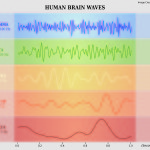Self-determination theory, developed by Edward Deci & Richard Ryan, argues that people are motivated by a desire for three things: autonomy, relatedness, and competence.
(Here‘s a handy place to brush up on self-determination theory.)
This theory suggests that teachers can motivate students by creating lesson plans and classroom environments that promote all three.
As is always true, such broad categories identified by researchers might not be easy to translate into specific classroom practices that work for my students.
For example: What kind of metacognition is appropriate for 1st graders?
How, exactly, can I instill a growth mindset in high-schoolers? (I know: “process praise” in place of “person praise.” But what exactly does that sound like for a 16-year old?)
And: if I want to put self-determination theory to work, what precisely does autonomy look like in the classroom?
Of course, the answer to that question will be different for each of us. To get that conversation started, here‘s an article over at Edutopia listing a few strategies to promote classroom autonomy.
Some of these might be helpful for your students; some not. But, in any case, they’re a useful prompt for our own thinking about the appropriate kind of autonomy to motivate our own students.



